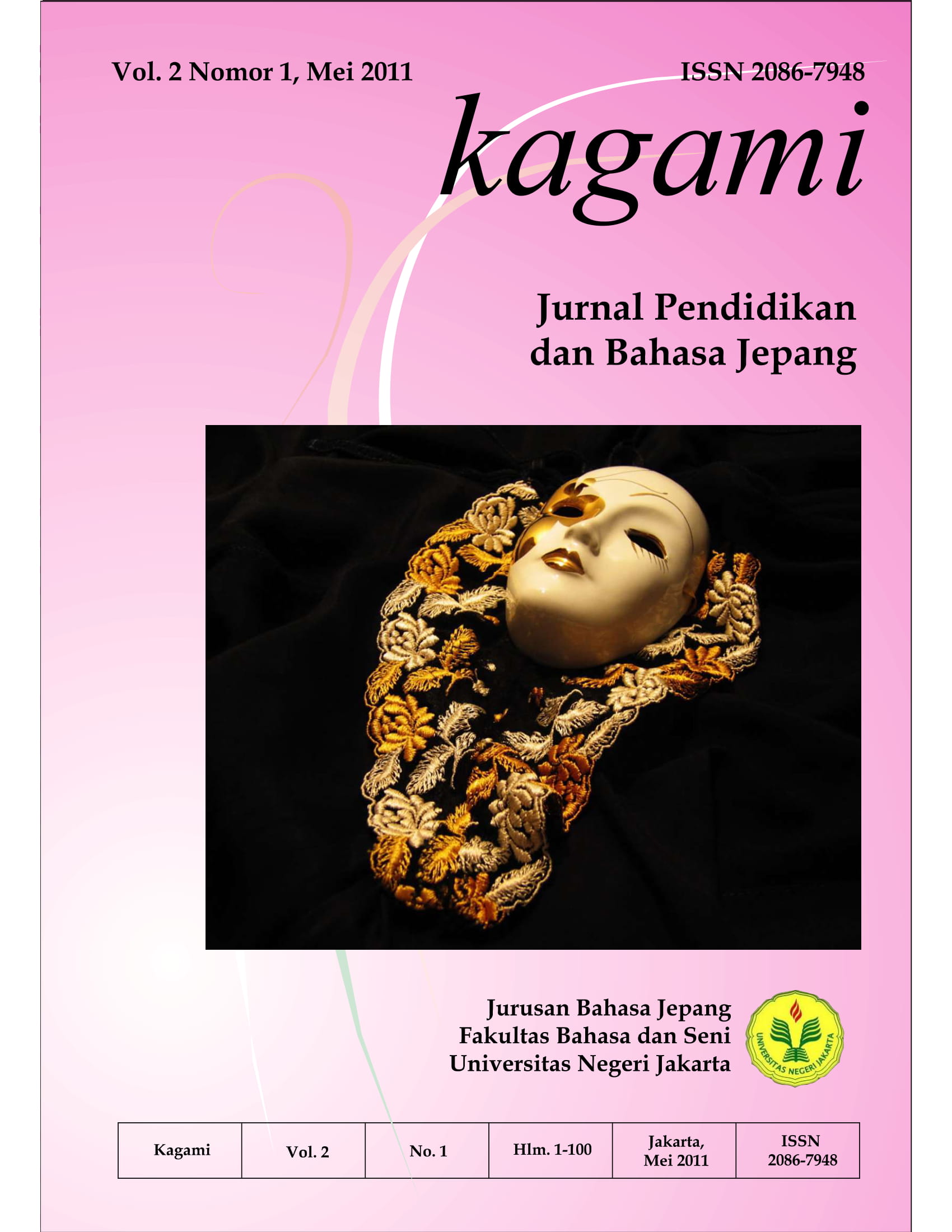MODEL EVALUASI DALAM MATA KULIAH DOKKAI
Keywords:
reading comprehension ability, Dokkai, written test, interview testAbstract
Dokkai is a reading comprehension subject at the Department of Japanese Language UNJ, which is conducted from the third semester to the sixth semester. During the teaching-learning process, we have been conducting various kinds of evaluation, including formative and summative tests, and from the results we found that the students could proceed to a higher reading level. But it turns out when we also found that they are still having problems when solving the reading comprehension test in Japanese Language Proficiency Test (JLPT) which is held twice a year. So we feel the need to solve this problem by finding an effective evaluation model to measure students' reading comprehension abilities. From the results of this study are expected to make an effective evaluation model so that we can organize a more accurate evaluation of the Dokkai course. This research method is the evaluative research. Evaluative method is intended to compare the activities, events, and products with a predetermined standard. This study aims to find appropriate evaluation model to measure reading comprehension. The first step is making the same test format with the form on the JLPT test, but it seems to be ineffective to measure student learning outcomes in the Dokkai subject. So we decided to try using an interview technique. After getting the datas we found there is a difference between the results of written test and the test with interview techniques. Written test tends to provide higher score than interview results. It is because on written test, students have more time to read over again the text than in oral test. In the other hand, the student may also copy the sentence of the text that related to the question given. Or in the worst, on written test there will always a probability for student to cheat and copy the other’s answer, which they have no
chance to do such thing on oral or interview test.From all matters founded in this research, we considere that it will be better to collaborate the both tests at the time. The purpose of combining the two forms of tests is to provide more reliable datas about actual student ability on Dokkai or reading comprehension.
References
Awangga, Suryaputra. 2007. Desain Proposal Penelitian. Pyramid Publisher: Yogyakarta
Creswell, J.W. (1998). Qualitative inquiry and research design: Choosing among five traditions. Thousand Oaks: Sage Publication.
Djaali. 2007. Pengukuran Dalam Bidang Pendidikan. Jakarta: Grasindo
Hughes, Arthur. 2003. Testing for Language Teachers. New York: Cambridge University Press
Ishida, Toshiko. 1995. 日本語教授法. Japan: Daishuukan Shoten
Kobayashi, Mina. 1998. よくわかる『教授法』 Japan: Alc
Nurhadi. 2005. Bagaimana Meningkatkan Kemampuan Membaca. Suatu Teknik Memahami Literatur Yang Efisien. Bandung: Sinar Baru Algensindo
Nurhadi. 2005. Membaca Cepat dan Efektif. Bandung: Sinar Baru Algensindo
Okuda, Kunio. 1992. 日本語教育. Japan: Fukuson Shuppan
Sobri, dkk. 2009. Pengelolaan Pendidikan. Multi Pressindo: Yogyakarta
Sudjianto. 2009. Metodologi Pembelajaran Keterampilan Berbahasa Jepang. Bandung: UPI
Sugiyono. 2006. Metode Penelitian Kuantitatif Kualitatif dan R&D. Bandung: Alfabeta
Sukardi. 2008. Evaluasi Pendidikan, Prinsip & Operasionalnya. Jakarta: Bumi Aksara
Sutedi, Dedi. 2009. Pengantar Penelitian Pendidikan Bahasa Jepang (Panduan bagi Calon Guru Bahasa Jepang dalam Meneliti basa Jepang dan Pengajarannya). Bandung: UPI
Tohardi. 2008. Petunjuk Praktis Menulis Skripsi. Mandar Maju: Bandung





